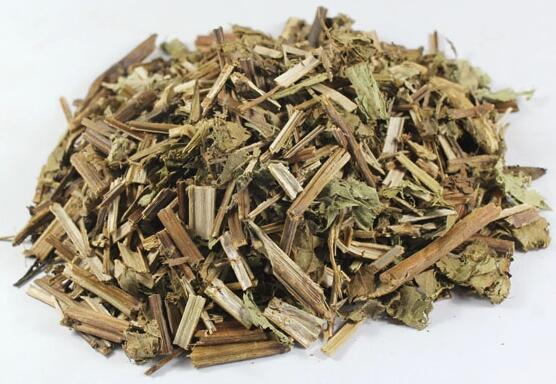Distribution:
Lycopus lucidus Turcz. var. hirtus Regel: liaoning, Jilin, Heilongjiang, hebei, shanxi, Neimenggu, Shaanxi, Gansu, Hubei, Hunan, Guangdong, Guangxi, Zhejiang, Anhui, Fujian, Jiangxi, Shandong, Taiwan, Yunnan,Guizhou, Sichuan provinces of China.
Properties (characteristics):
Bitter, sweet, acrid, slightly warm.
Channels (meridians) entered:
Liver, spleen.
Medical functions:
Promotes menses, diuretics, inhibits pain.
Actions & Indications:
For menostasis due to blood stasis. scanty flow in menses, edema after birth, swelling from impact injuries, Traumatic Arthritis, injuries, Edema, swelling from boils, lochia after giving birth.
Chemical ingredients:
1. hexanal, [cis-3-hexen-1-ol], 9trans-2-hexen-1-ol], [trans-2-hexen-1-ol], -1[hexanol], [alpha-thujene], [alpha-pinene], [sabinene], [myrcene], [trans-pinocarveol], [myrtenol], [alpha-cubebin], [beta-elemene],[{E}-geranylacetone], [beta-selinene], [nerolidol].
2. [stachyose], [lycopose].
3. [oleanolic acid], [betulinic acid], [3-epimaslinic acid], [euscaphic acid], [2-alpha-hydroxyursolic acid], [tormentic acid]

4. [acacin, linarin].
Dosage:
10 to 20 g. Concentrated extract: 0.5 to 2 g.
Modern Research:
Ze lan can be used to mitigate the damage of the liver caused by carbon tetrachloride, according to researchers Xie Renming et al at Shaanxi Traditional Chinese Medical School of Shaanxi TCM Research Institute. Ze lan can lower the SGOT (AST) and SGPT (ALT) of laboratory mice that were given carbon tetrachloride for 3 months and resulted cirrhosis of the liver.
Cautions:
Use with caution in cases of pregnancies or in cases without blood stasis The use ze lan (Eupatorium fortunei Turcz.) and pei lan (Eupatorium japonicum Thunb) are often intermixed in the provinces of Hunan, Fujian, Guangdong, Guizhou.. These are different herbs with different applications. Should not use as substitutes for each other.

![Diseases, Symptoms, tcm, [tcmwindow.com]](/uploadFile/adImg/2015/11/11/f5cbfcc0-4df5-4646-9b9a-f316651a0199.jpg)





